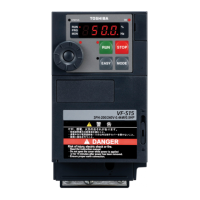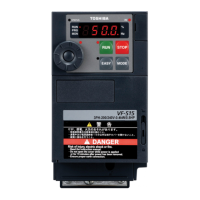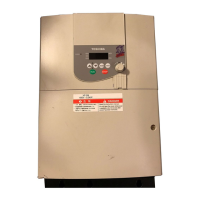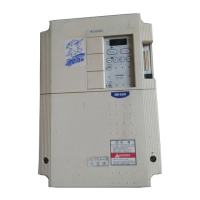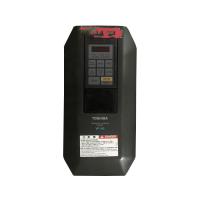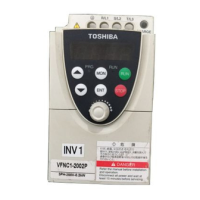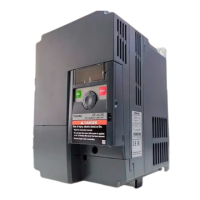E6581158
A-18
1
In circuit configuration 1, the brake is turned on and off through MC2 and MC3. If the circuit is config-
ured in some other way, the overcurrent trip may be activated because of the locked rotor current when
the brake goes into operation.
Circuit configuration 2 uses low-speed signal RY to turn on and off the brake.
Turning the brake on and off with a low-speed signal may be better in such applications as elevators.
Please confer with us before designing the system.
Measures to protect motors against surge voltages
In a system in which a 400V-class inverter is used to control the operation of a motor, very high surge
voltages may be produced, applied to the motor coils repeatedly for a long time and cause deterioration
of their insulation, depending on the cable length, cable routing and types of cables used.
Here are some examples of measures against surge voltages.
(1) Lower the inverter’s carrier frequency.
(2) Set the parameter H (Carrier frequency control mode selection) to or .
(3) Use a motor with high insulation strength.
(4) Insert an AC reactor or a surge voltage suppression filter between the inverter and the motor.
1.4.2 Inverters
Protecting inverters from overcurrent
The inverter has an overcurrent protection function. However because the programmed current level is
set to the inverter's maximum applicable motor, if the motor is one of small capacity and it is in opera-
tion, the overcurrent level and the electronic thermal protection must be readjusted. If adjustment is
necessary, see 5-13, and make adjustments as directed.
Inverter capacity
Do not use a small-capacity (kVA) inverter to control the operation of a large-capacity motor (two-class
or more larger motor), no matter how light the load is. Current ripple will raise the output peak current
making it easier to set off the overcurrent trip.
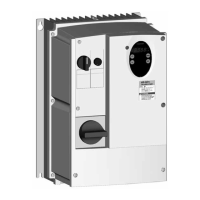
